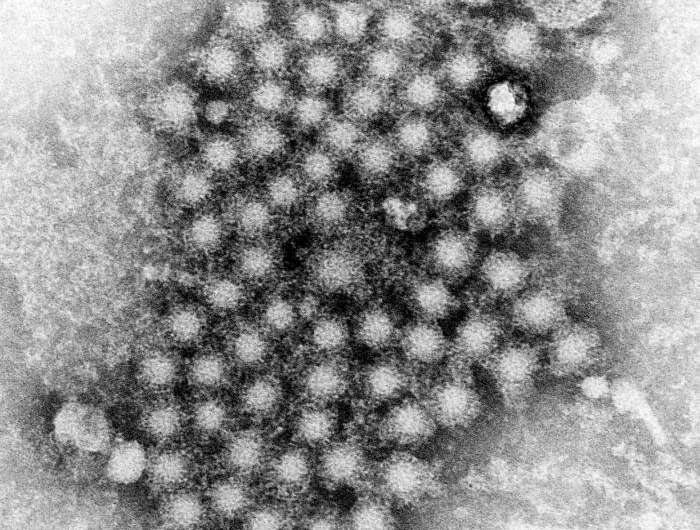Exploring a key to hepatitis C entry into cells

In a new paper published in Nature, scientists from the National Institute of Allergy and Infectious Diseases (NIAID), part of the National Institutes of Health, describe the structure of a key protein on the surface of the hepatitis C virus (HCV) and how it interacts with its receptor found on some human cells. The findings provide new leads for developing an HCV vaccine. Hepatitis C is one of the most common bloodborne infections in the United States. Although it may not cause any symptoms in its early stages, untreated chronic infections can lead to severe liver damage, cancer, and death. Concerningly, infections are on the rise among young adults, largely due to exposure resulting from shared drug-injectables. No vaccine is available to prevent HCV infection.
HCV is usually transmitted via blood, such as during birth or when drug-injection equipment is shared. Because HCV may not cause any symptoms for years after initial infection, infections often go undetected. According to the U.S. Centers for Disease Control and Prevention, an estimated 2.4 million people are living with hepatitis C infection in the United States. More than half of all people infected with HCV are thought to develop chronic infection. HCV is a leading cause of cirrhosis, liver failure requiring transplant, and the leading cause of death from liver disease. Although effective antiviral drugs are available to treat HCV infection, they are expensive and do not prevent reinfection.
In their new paper in Nature, researchers from NIAID and other organizations describe the interaction between a protein expressed on the surface of the HCV, known as HCV E2, and a receptor called CD81 found on the surface of some human cells. Prior research had shown that antibodies interfered with interactions between these two proteins. This suggested that the interaction between HCV E2 and CD81 allowed HCV to enter and infect human cells. However, exactly how this occurred was unknown.
The researchers determined the exact structure of HCV E2 and CD81 and studied how the two proteins interacted when exposed to each other under different conditions. They found that under acidic conditions, HCV E2 easily binds to the CD81 receptor. Once the interaction between virus and receptor begins, HCV E2 changes shape, facilitating its entrance into the cell by putting the virus in closer contact with the cell membrane.
Identifying these structures and the ways they interact with each other may provide the foundation for a vaccine against HCV, the researchers say. A vaccine potentially could cause a person to make specific antibodies that prevent HCV E2 from binding with CD81, stopping the virus from entering the cell, and preventing HCV infection.
More information: Ashish Kumar et al, Structural insights into hepatitis C virus receptor binding and entry, Nature (2021). DOI: 10.1038/s41586-021-03913-5





















